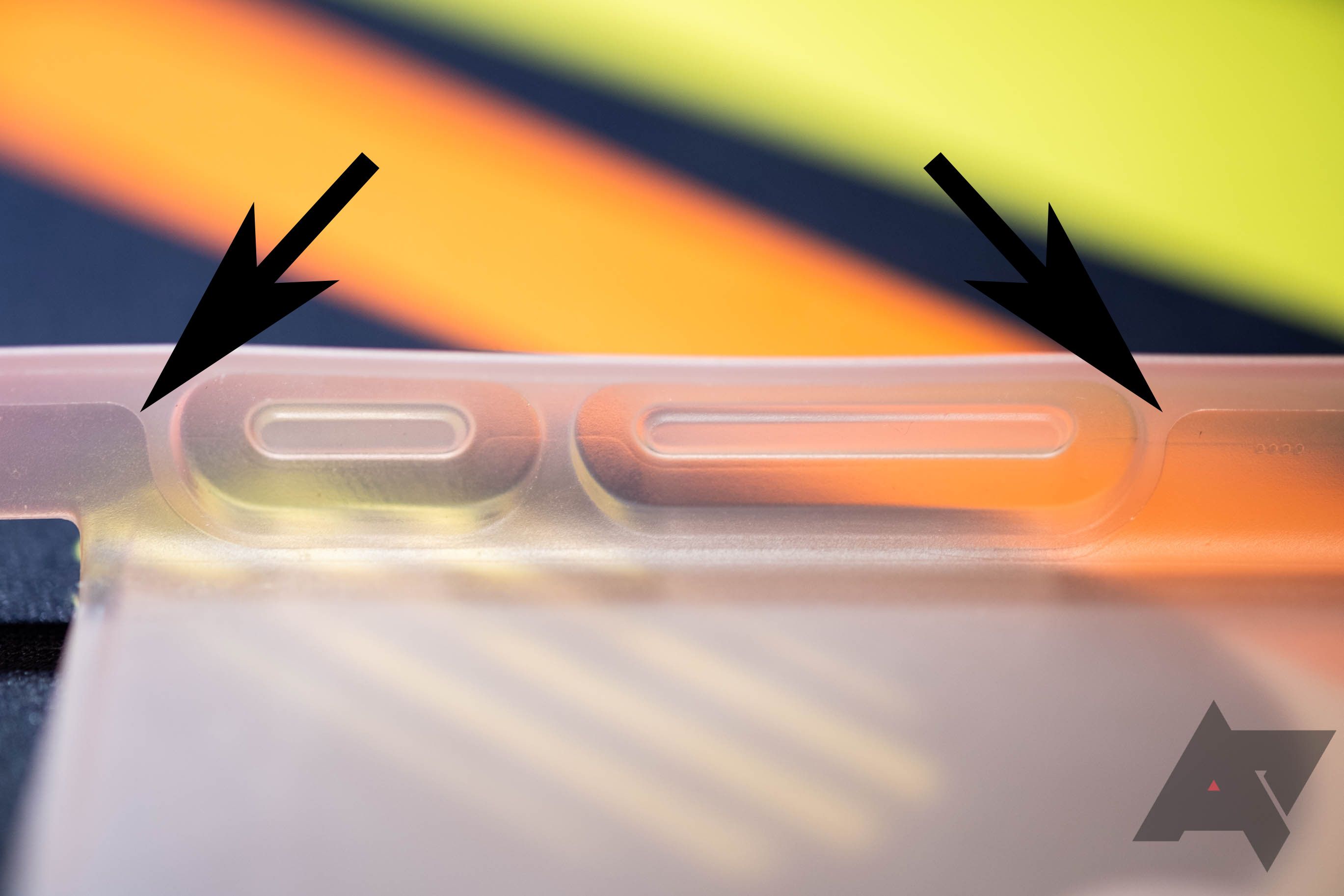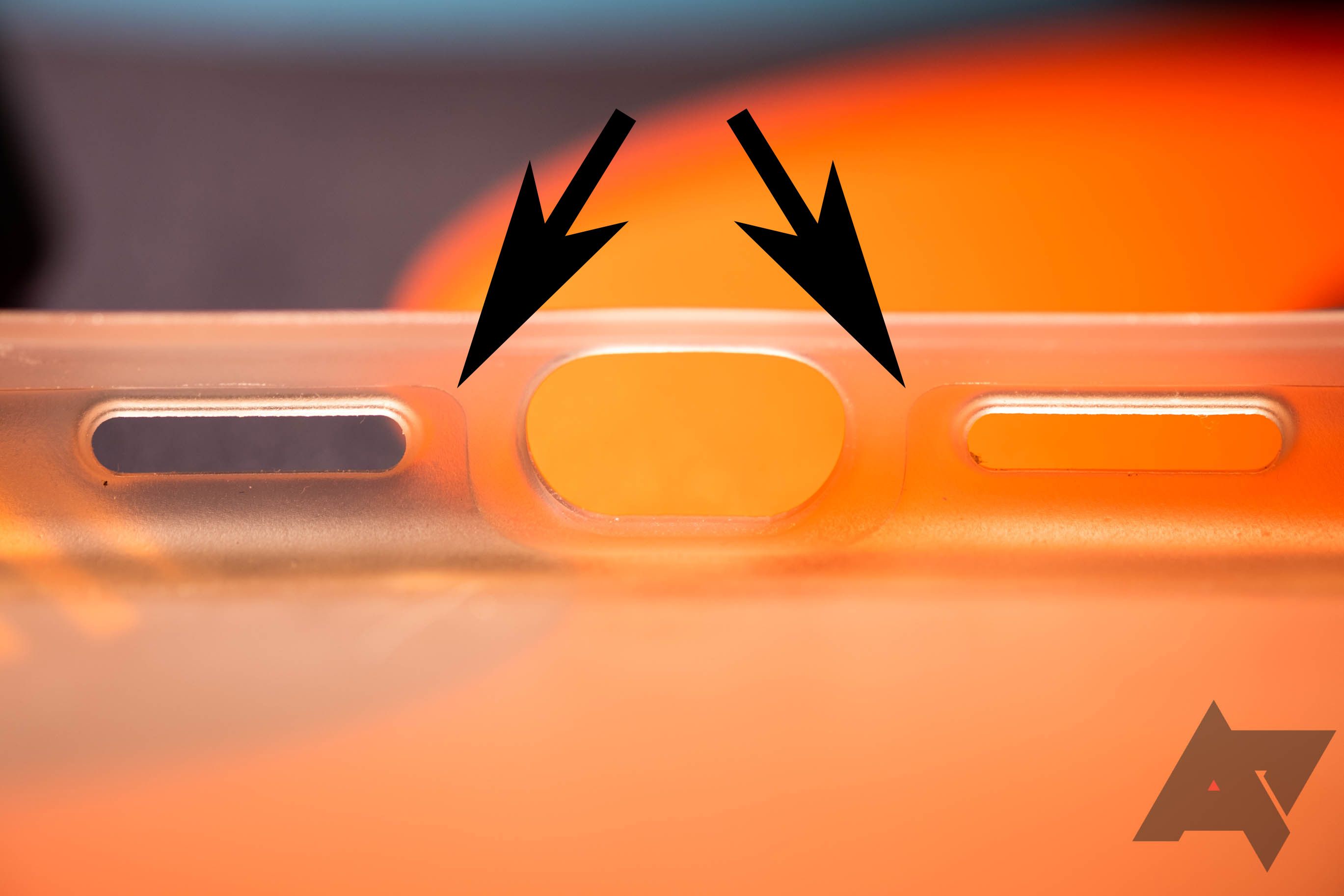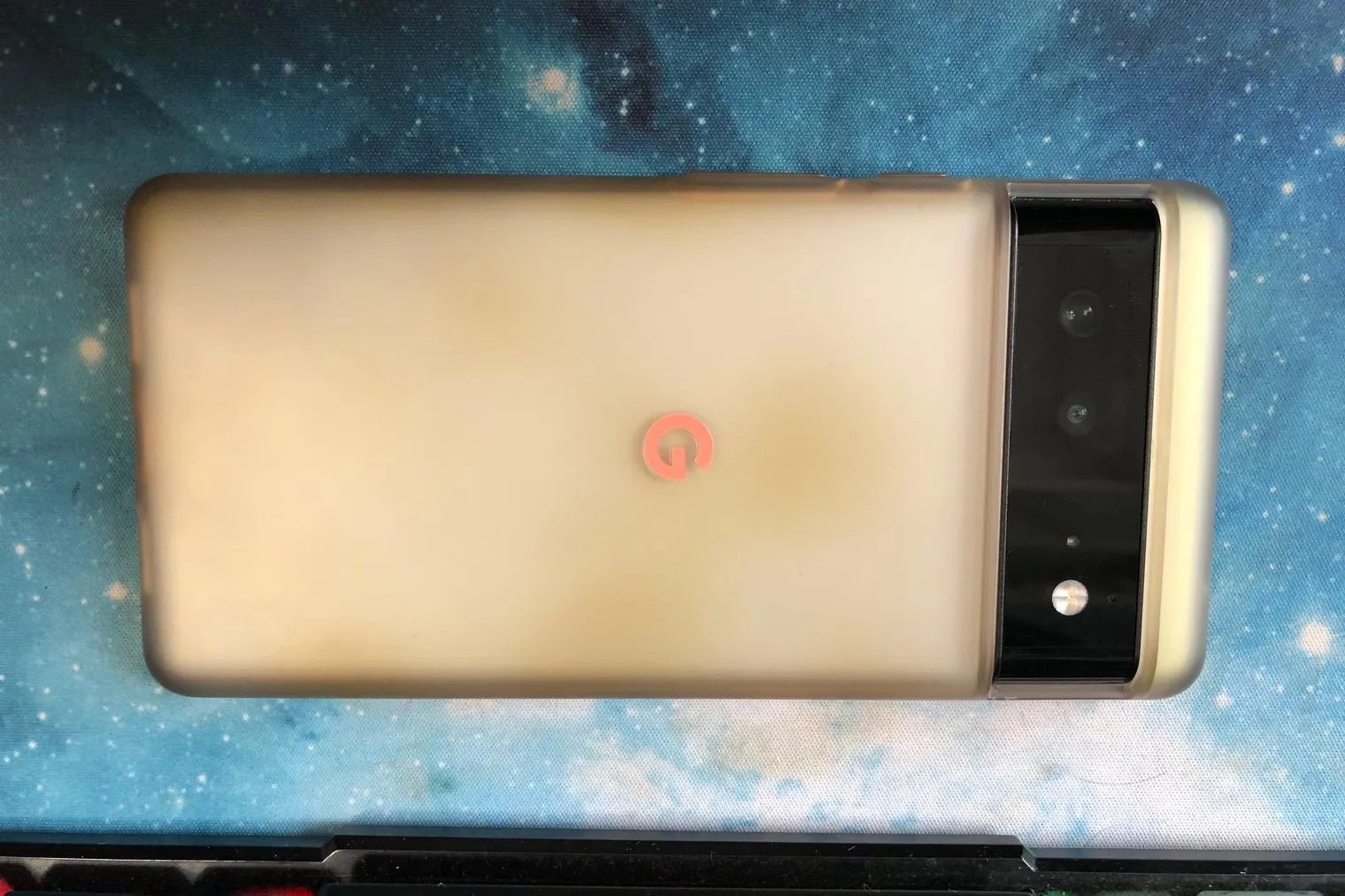First-party smartphone cases are usually premium products, commanding a higher cost than third-party equivalents. That’s offset by a certain expectation of quality; the company that made the phone can engineer a case that works with it perfectly, potentially offering better experience. Unfortunately, that hasn’t been the case with Google’s recent Pixel 6 cases, which are suffering issues such as yellowing and deforming more quickly than expected, and we can now tell you precisely why these problems are happening.
Accessory manufacturers are often “in bed” with the smartphone makers. They need early access to the designs to engineer cases in time for launch, and that sort of access can be mercurial, yanked away for no reason if the smartphone manufacturer decides to end that partnership. Given the back-scratching involved, none of the manufacturers I spoke to for this story were willing to go on the record to discuss the engineering issues present in Google’s designs. However, an anonymous but highly trusted source within the case industry (with experience making cases for the Pixel 6) was willing to explain just what causes the sort of issues Pixel 6 case owners are experiencing and precisely which mistakes Google made to cause them, in both materials and design.
Discoloration
To start, the yellowing and discoloration that customers are experiencing with Google’s cases isn’t unique. Other cases made of flexible thermoplastic materials like TPU (thermoplastic polyurethane) and TPE (thermoplastic elastomer) will do it too, as anyone that’s bought a cheap clear case on Amazon can tell you. It’s an inevitability, primarily caused by a process called photolysis, which is triggered by exposure to things like UV light (though other things can also cause it, more on that in a bit). It can be mitigated through anti-yellowing additives included in the thermoplastic, but that’s a very short-term solution, and I'm told the inclusion of anti-yellowing agents can give you at best a few extra months of UV resistance in a product’s lifespan. Other thermoplastics, like polycarbonate, are inherently more UV-resistant, but they’re less flexible and can’t be used for all the materials in most case designs.
Other forms of discoloration can be a result of the finish Google chose. Many flexible thermoplastic cases will opt for a clear finish rather than a textured one to reduce their ability to pick up other materials. Less euphemistically, hands are dirty, and gritty textures pick up oil and gunk from your unwashed fingers. Even the increased use of hand sanitizer during the pandemic can impact long-term case integrity. These materials — oils, alcohols, and other solvents — can damage and discolor plastic, and a textured matte finish, such as the one used on the official Pixel 6 cases, ensures they get stuck there, doing even more damage over time compared to a glossy finish that can be easily wiped clean. The matte finish can also abrade and pick up colors from things it’s exposed to, like clothing, amplifying the issue of discoloration.
“...it’s a design that’s basically asking for trouble, ignoring the fundamental shortcomings of the materials used.”
There are three ways that Google could have prevented this. The company could have used a different material less prone to yellowing, though that would have required a different design. Short of that, Google could have opted for darker and less transparent colors for the thermoplastic parts of the case that are less likely to show the inevitable discoloration, though that would reduce the “style” Google aimed for with layered colors. Eliminating the matte finish in favor of a glossy one would have also reduced discoloration.
Many popular cases (especially so-called “hybrid” style cases) adopt all three approaches, using a TPU frame that’s either darkened or black together with a clear/glossy polycarbonate back. This separates the degradation-prone thermoplastic components of the case to the areas where flexibility is needed the most and where a lack of transparency isn’t an issue, while keeping a transparent yellowing-resistant back that can show off your phone’s colorway.
If you aren't familiar with the physical design of Google’s case, it’s sort of a “semi-hybrid” composite of flexible TPE overmolded (one material injection molded and bonded to another) on top of a harder recycled clear polycarbonate plastic body. This means that the yellowing-prone thermoplastic covers basically all parts of the exposed case, even in areas where flexibility isn’t needed. It makes for a more uniform finish and texture while pristine, but now that you know the limitations, it’s a design that’s basically asking for trouble, ignoring the fundamental shortcomings of the materials used.
Deformation
The second issue that Googe has run into with its Pixel 6 cases is deformation. Even those of us at Android Police who never go outside (and never run into UV-based degradation) have experienced this problem to some degree, and a friend of mine I personally recommended the Pixel 6 to has suffered a case so deformed it can interfere with pressing the volume keys.
.JPG)
.JPG)
.JPG)
You might assume that this is some sort of physical damage caused by user error, but again, I’m told it’s actually an issue with the case — both in terms of the materials chosen and a sort of “rookie mistake” Google made in the physical design.
We’ve touched on flexible thermoplastics, and the deformation here is clearly happening in the two areas that aren’t backed by a harder polycarbonate material in the overmolded design. Different flexible thermoplastics can behave differently under mechanical stress, and Google may have opted to use the wrong kind of material by selecting TPE.
My source tells me that TPEs are often less durable and hard than TPU, making it more likely to deform when exposed to mechanical stress and less likely to “rebound” compared to TPU. (There are some exceptions, as the “durometer” hardness scale of materials like TPE can be adjusted through the use of subtly different formulations, but I’m told it’s broadly accurate.) According to my expert, TPEs are typically only used by case manufacturers in parts or circumstances that won’t be “exposed to the world” — that can mean using it on the inside of the case, where the added flexibility offers additional impact protection compared to TPU, but not on the outside where it’s subject to greater stress, where TPU is the better choice.
But TPE isn’t the only issue when it comes to deformation, and Google could have run into this issue even if it had more wisely used a better material, simply because of how the case itself was designed.
Areas like the buttons on a case are exposed to repeated mechanical stress simply through repeated pressing. As you push, the materials deform, triggering the buttons themselves but also flattening and squishing them slightly under the pressure of your finger, spreading outwards. This action places stress not just on the button, but increases the internal stress on that entire part of the case through the change in shape. This deformation mostly rebounds once the force is removed, but like any other flexible material, a change in shape can become permanent.


You can see where the rigid polycarbonate back ends in the overmolded design, leaving only TPE around the buttons and charging port.
More simply, if you press the buttons on the case, they bend. But the bending can stretch things out, causing the material in that area to change shape over time by pushing outward, and you run into exactly the issue the Pixel 6 cases do, where the lip along the screen surrounding the buttons bows out. (The deformation around the charging port is similar but obviously not caused by buttons — presumably, it becomes stretched out in other ways, like when the case is removed and put back.)
That’s an issue that most flexible materials have to some degree depending on the forces involved, and it’s so inevitable that almost all well-regarded third-party cases have a workaround for it: Give the force an opportunity to escape that won’t deform the overall structure.
My anonymous case-making expert here asked that I not divulge their un-named company’s specific solution, claiming it’s a kind of “obvious trade secret,” but a simple examination of the precise shape and structure of the material around the buttons on most similarly-designed cases (especially those that claim to offer a more tactile experience) should make it pretty obvious: cut holes. But there are other solutions as well, like using a separate harder material for the buttons, depending on the style of button you want in a case — all you need is some way to relieve that mechanical stress.
Google did thin out the area surrounding the buttons a little. That partly helps to make them more tactile, though can also provide a tiny bit of strain relief by allowing that area to deform first, but it’s not enough of a solution. Google should have not only chosen a different material less prone to easy deformation, but it should have used a different design to reduce the effects of mechanical stress on the case.
Less than premium
Cumulatively, it’s hard not to see Google’s most recent cases as poorly thought out, if not outright defective in their design, with numerous errors in materials and finish causing premature discoloration, wear, and deformation. They’re still arguably doing their basic job of saving a Pixel 6 or 6 Pro from minor tumbles and unnecessary wear, but deformation increases the chance of failure and allows easy entrance for materials like sand that could gouge up that glossy rear finish Google insisted on using for the phones — hardly protective. Spending the relative $30 premium on a case just to see it discolored and bent out of shape a mere six months later isn’t a great value either, considering there are plenty of better cases for the Pixel 6 that are less likely to have these issues and which cost a lot less.
Again, I should stress that most of these problems are inevitable, but they shouldn’t be happening so quickly or easily.
Google's older fabric cases (left/bottom) compared to the new cases (right/top).
We reached out to Google for more information about these issues and offered the company an opportunity to respond to the claims of inferior materials and defective design, but it did not respond. According to our readers, the issues seem to be relatively common. Our sample size here is admittedly small, with around 700 respondents. But the majority of Google-case-owning readers in a recent poll reported that their cases were declining, with over 40% claiming they had become damaged or discolored. The Pixel 6 series was only released last October, so none of these cases have been in use for more than seven months.
Google's warranty information says that it covers "defects in materials and workmanship under normal use" for one year from the date of purchase. I would hope that the trouble customers are running into would qualify for replacement.
Given the severity and apparent frequency of these issues with Google’s new first-party case design, I hope the company considers both changing its design in the future for the Pixel 7 series and (if it’s not too late) the Pixel 6a. Maybe this is a good opportunity to bring back the much-loved fabric cases? In the meantime, making it up to those affected right now might also be a wise decision on Google’s part.

.JPG)

.JPG)